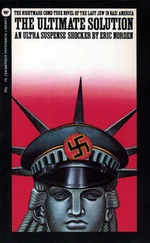Well, these are truly quixotic claims. I also detect the spirit of PKD in them as well, for in the book VALIS an ancient ET satellite (somehow connected with an “outside” intelligence) circles the Earth, selectively firing information into people’s brains. There is nothing intrinsically wrong with alien probe scenarios. On the contrary, they serve to remind us that an advanced alien intelligence might well have radical technologies at its disposal—after all, we grant that they are alien and advanced—and that we should maybe think again about how we go about sending out signals and looking for signals.
The biggest problem I have with such an ET scenario is that it fails to account for the significance of the software-like laws of Nature that, as we now know, are bound with our very existence and all forms of informational patterning. Furthermore, we are left without an explanation for how the alien species itself came to be. It is also not clear why the alien intelligence would want to use seeded genes to conduct communication. Though they are potentially long-lasting, it still remains a rather haphazard and totally unpredictable method of information transfer, and it runs the very real risk of total failure through plant extinctions. If an ET intelligence were indeed able to build sophisticated probes with which to scour the Universe, then surely when the probes have encountered an intelligence worth contacting they would use some direct and unambiguous method of communication rather than having to construct “tailor-made” genes. And then there is the problem with the age of the probes and the distance of the probe senders. If such an intelligence were a million light years away, is it really feasible that a useful contact could be made? Unless faster-than-light technology has been developed (which immediately introduces paradoxes), then any hope of interstellar communication across really vast distances is all but futile. And if the ETs had telepathy or some kind of advanced capacity like that, then why bother with cumbersome probes in the first place?
On other occasions, McKenna concedes that the alien is merely the Other in one of its many symbolic guises, and I think that this is more likely to be the case. As I discussed earlier, the alien or the advanced ET is a major symbol peculiar to the modern era. Perhaps this is one of the Other’s “favorite” metaphors with which to express its nature. If this is so, we can dispense with all notions of ET civilizations millions of light years away and concentrate upon our final option, namely that the Other is somehow built into reality like ourselves and that its intelligence is not far away but all around us. What follows is a prelude to the final option.
Is the Reality Process Intelligent?
One scientist who believed the Universe to be home to a vast and highly evolved intelligence was the late unconventional British astronomer Sir Fred Hoyle. However, the intelligence conceived by Hoyle and outlined in his little-known book The Intelligent Universe does not belong to some ET species existing elsewhere, nor does it refer to God, for Hoyle was at heart an atheist. Rather, Hoyle believed that a non-omnipotent intelligence preceded us in existence and helped to create life on Earth. Let me explain.
Hoyle suggested that life did not start in the turmoil of the soupy primeval oceans of the Earth as is commonly accepted. Hoyle argued instead that pre-life molecules and simple microorganisms might exist throughout the Universe amid interstellar dust clouds and within the interior of comets and meteors. Comets often contain the same proportion of carbon, hydrogen, oxygen, and nitrogen as the Earth’s biosphere and are therefore potentially capable of giving birth to primitive replicating microorganisms. Through their “free lift,” such microorganisms could be dispersed onto the planets that lie in the path of their cometary hosts. Because the Earth and indeed any planetary body is continuously bombarded by cosmic bodies, it would only be a matter of time before the microorganisms and molecules surviving their trip found themselves in a sustainable environment in which to further evolve. Hoyle reckoned this is how life started on Earth—that the Earth has been seeded by simple life forms and organic molecules.
To bolster his theory, Hoyle pointed out that what appear to be fossilized microorganisms have been found inside some of the various meteorite fragments that have been recovered here on Earth. In addition, many microorganisms have evolved such a hard protective layer that they are able to withstand massive doses of radiation (some bacteria have even been found living contentedly within nuclear reactors!). This form of protection is an essential requirement should microorganisms have formed in interstellar space but an inexplicable adaptation according to the conditions here on Earth. It has also been found that microorganisms exist up to forty-five miles above the Earth’s surface, which is consistent with the theory that the Earth is being continually bombarded with life-bearing cosmic debris.
Hoyle went further. He claimed that not only did life originate from space, but that the evolutionary process on our planet has since been “directed” through the continuous arrival here of microorganisms. Hoyle suggested that some of these “invading” microorganisms are able to attach their own DNA to the host organisms that they encounter, much as viruses function by incorporating their own DNA into the host’s genome. While some of these viruslike interstellar microorganisms might be harmful, some would be sure to confer an advantage should their DNA successfully incorporate itself into the DNA of a compatible host organism. (Think of mitochondria, the energy-producing organelles inside animal cells that have their own DNA and are thought to have once been free-living bacterial organisms that developed a symbiotic relationship with animal cells.) In this way more and more genetic information is integrated from the basically unending source of DNA reaching the Earth from space.
Hoyle did not give up there either. In accounting for the unbelievable series of cosmic coincidences that have facilitated the emergence of organic life, Hoyle speculated that the microorganisms in interstellar clouds also serve to influence the formation of stars and planets (by means of physical processes). In other words, the creative cosmic processes we observe are the result of an active intelligence that is forever striving to survive—with the added difficulty, according to Hoyle, that the physical laws of the Universe are always changing. In The Intelligent Universe, he writes:
The apparent coincidences which allow carbon-based life to exist throughout our galaxy and in other galaxies might well be temporary possibilities in a Universe where the applications of the physical laws are changing all the time. This point of view… suggests that in the future the Universe may evolve so that carbon-based life becomes impossible, which in turn suggests that throughout the Universe intelligence is struggling to survive against changing physical laws, and that the history of life on Earth has only been a minor skirmish in this contest. {43} 43 1. Hoyle, The Intelligent Universe, 222–23.
Are we to believe then that the laws of Nature gradually change and that at some distant time in the past a powerful intelligence engineered things so that in the future, carbon-based life would utilize the newly prevailing cosmic conditions? This is indeed what Hoyle asked us to believe. He summed up his thinking in the following singularly profound sentence in which he states this about our species: “We are the intelligence that preceded us in its new material representation—or rather, we are the re-emergence of that intelligence, the latest embodiment of its struggle for survival.” {44} 44 2. Ibid., 239.
Читать дальше










